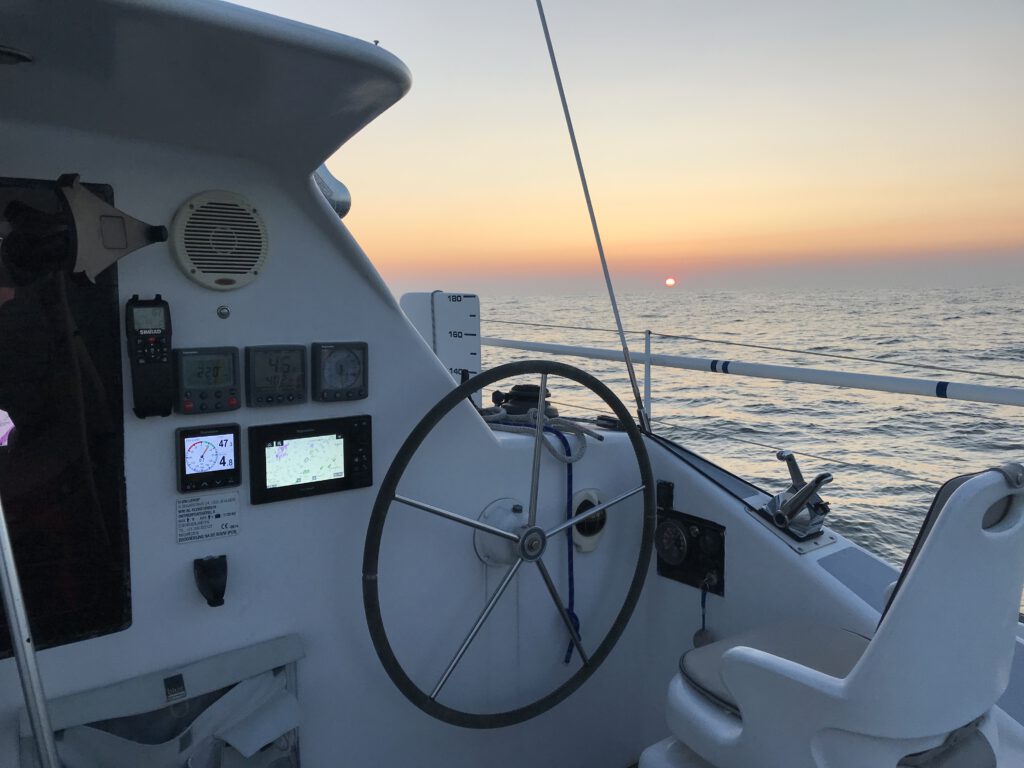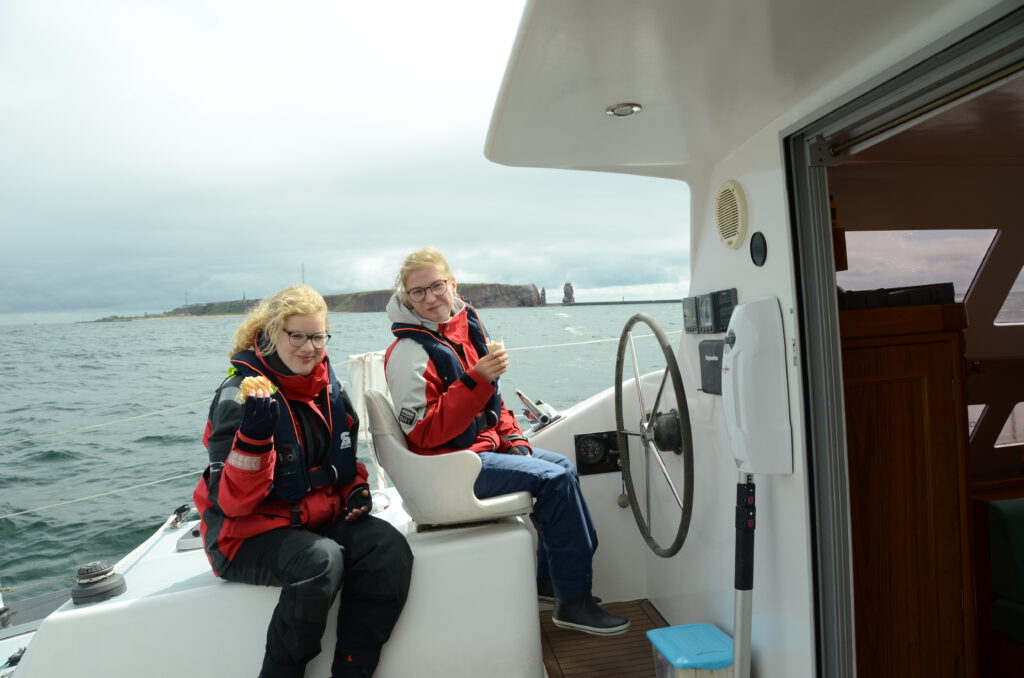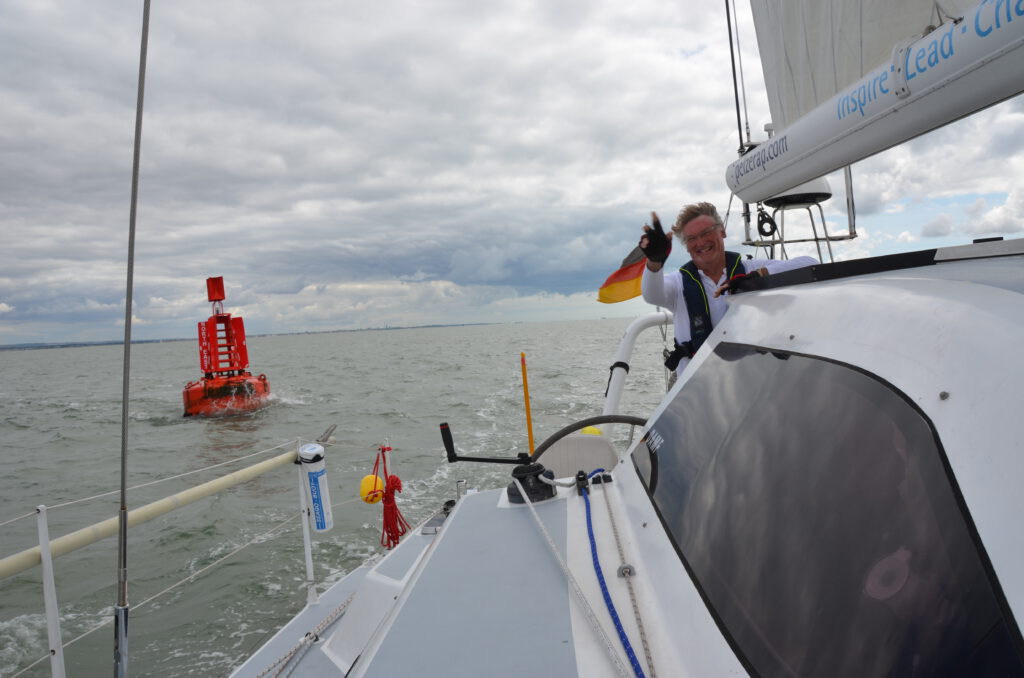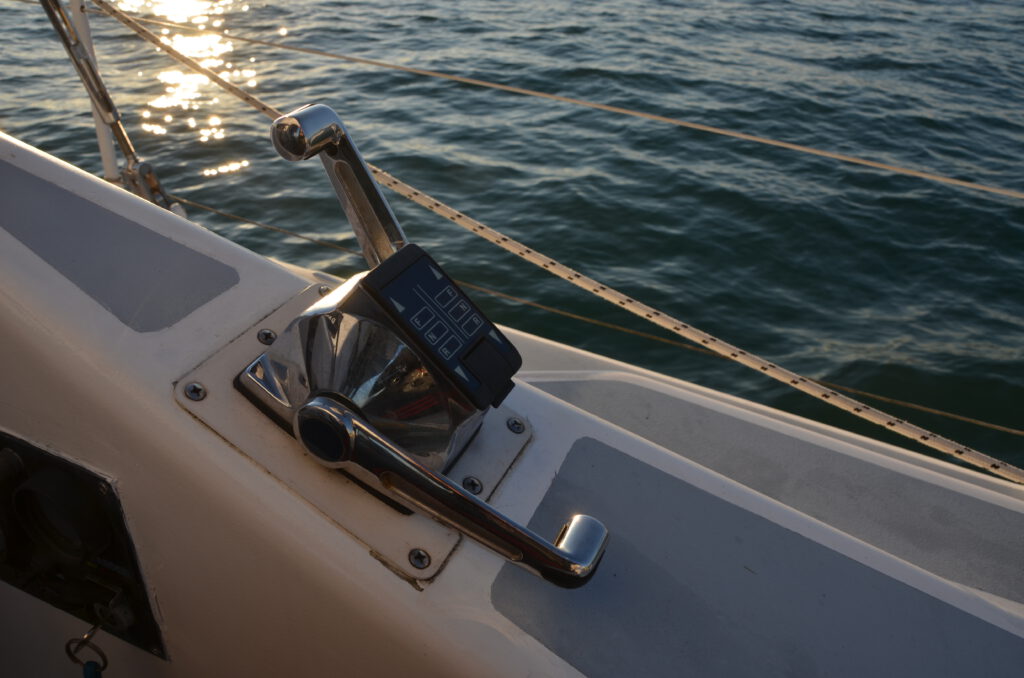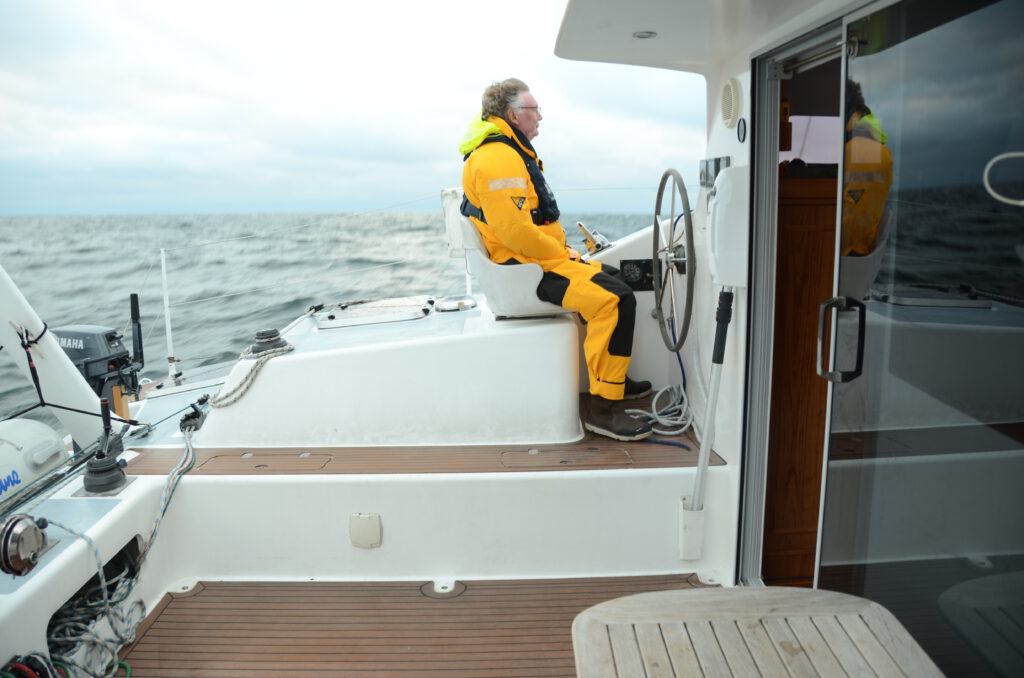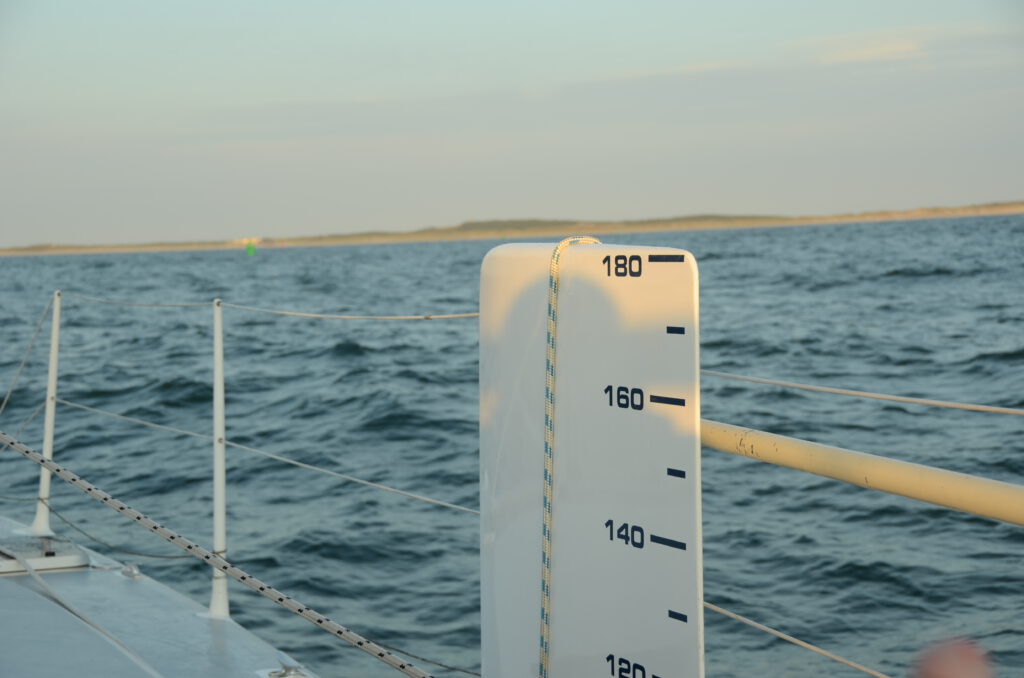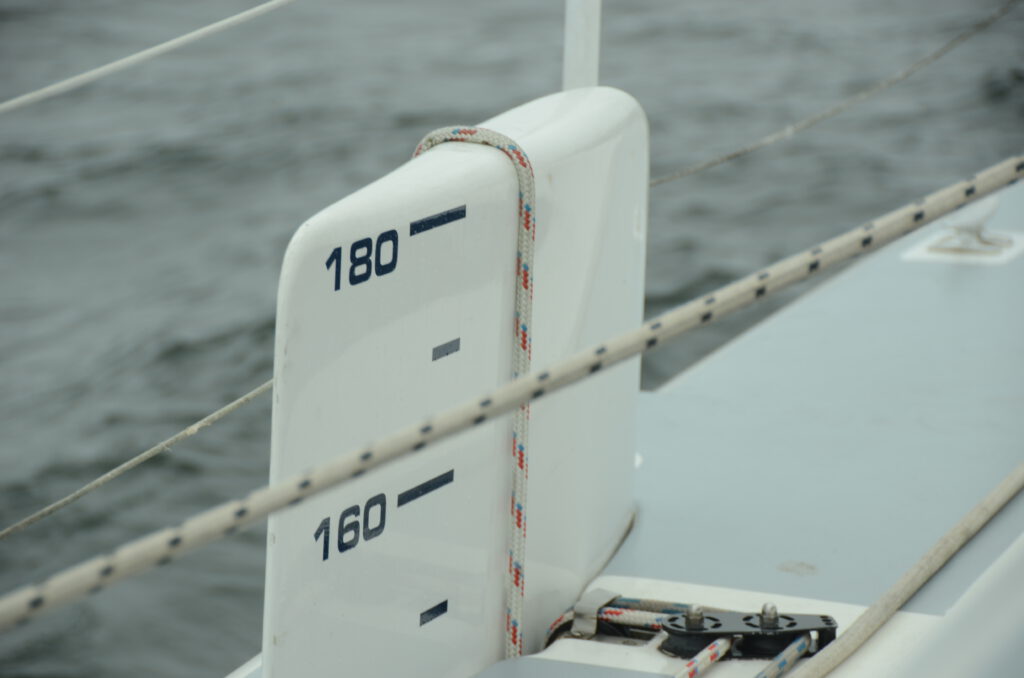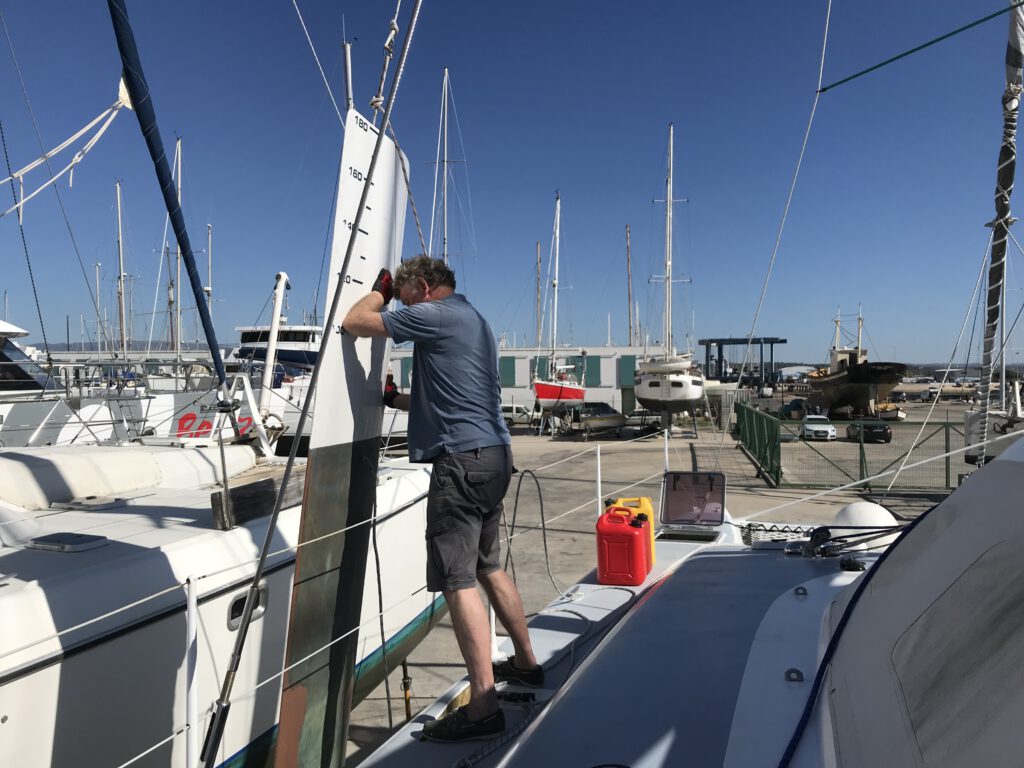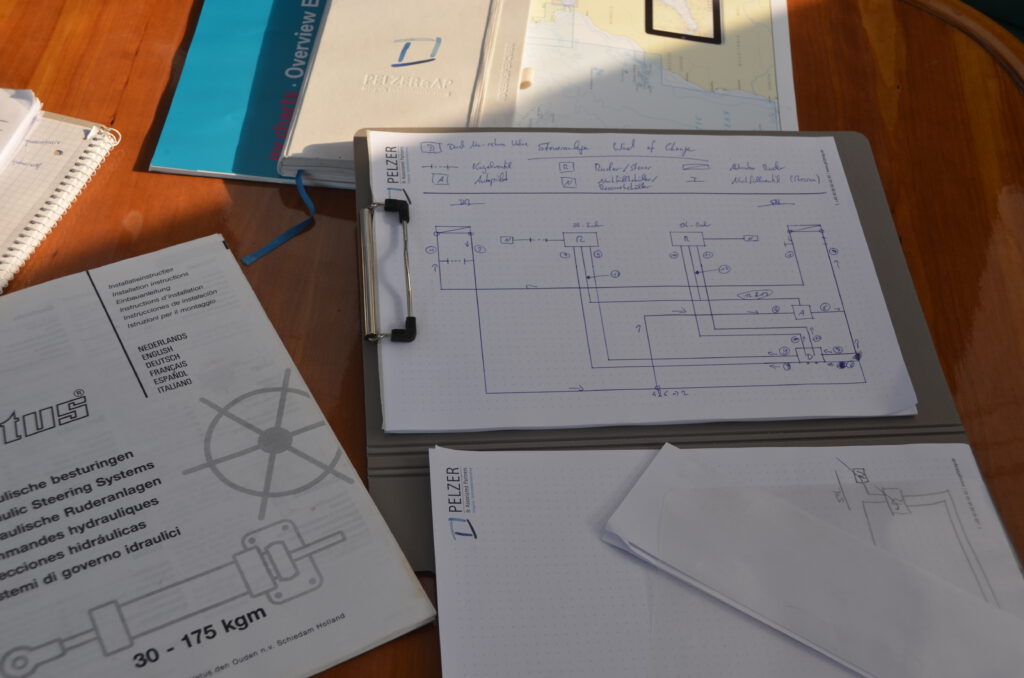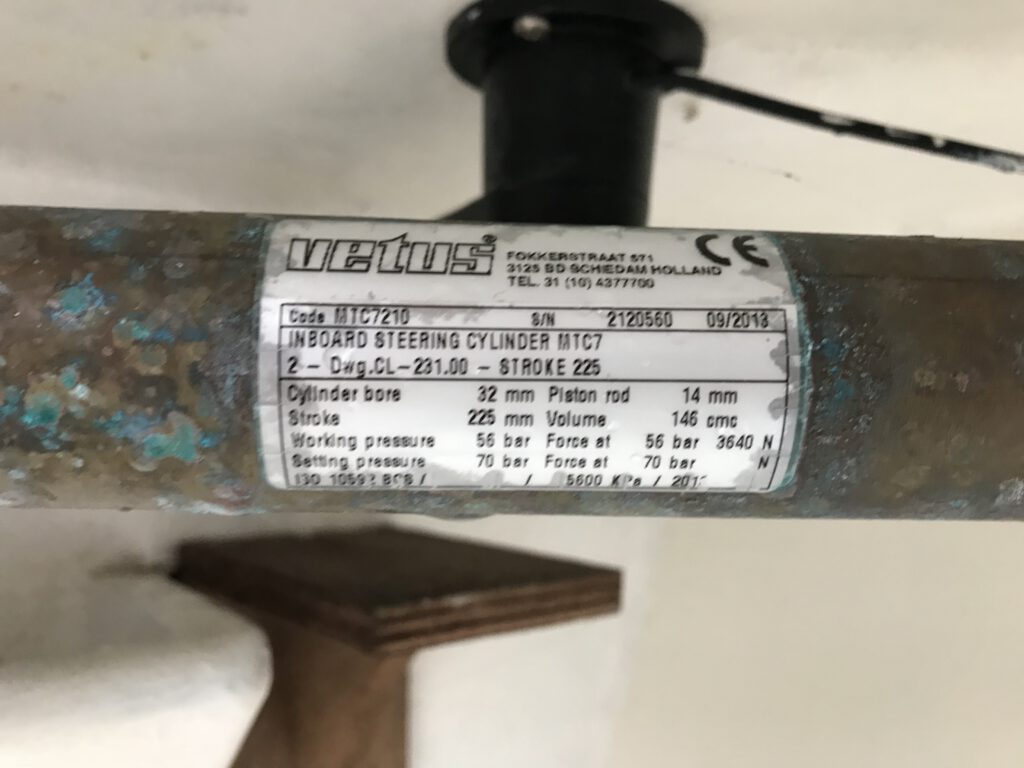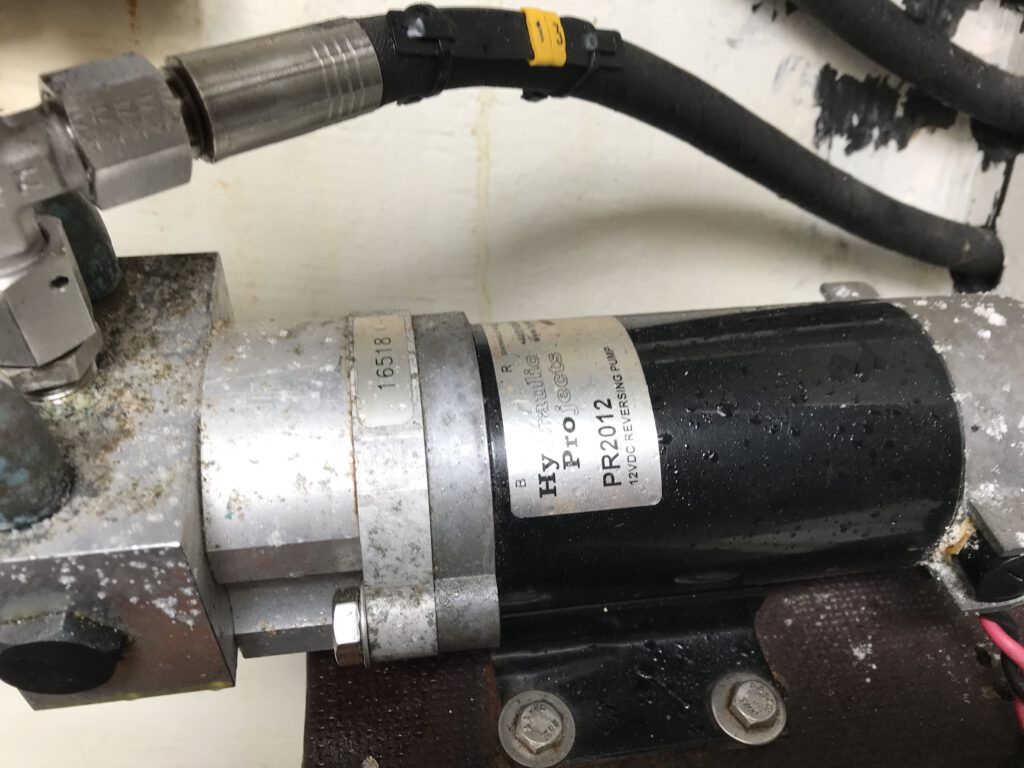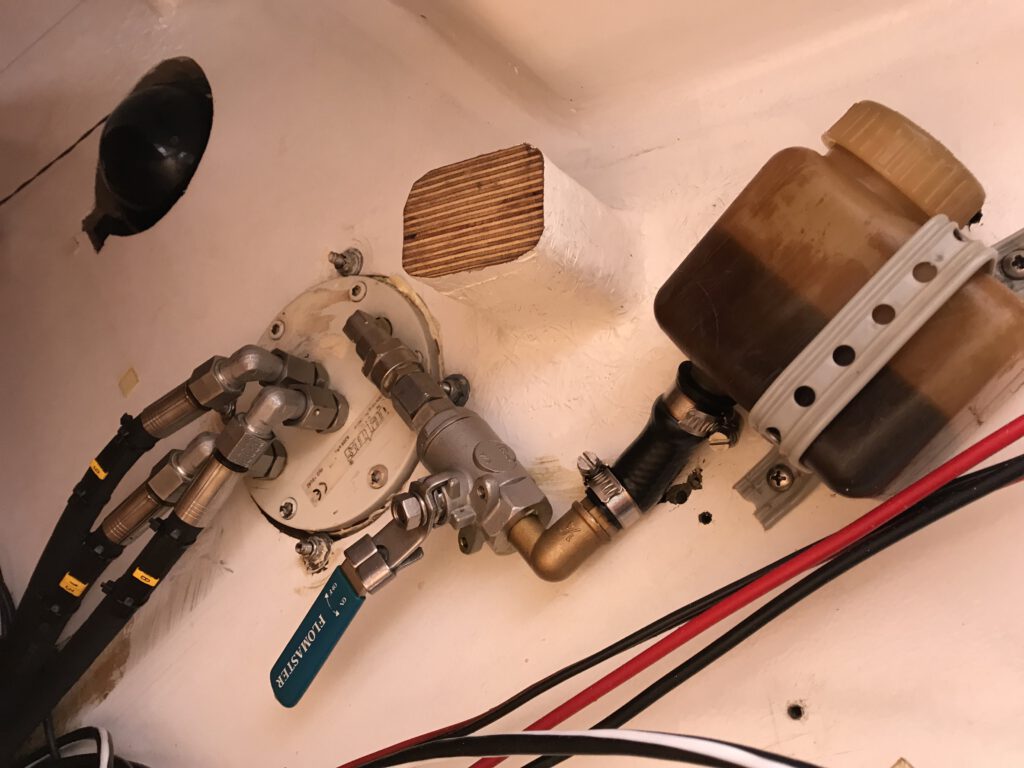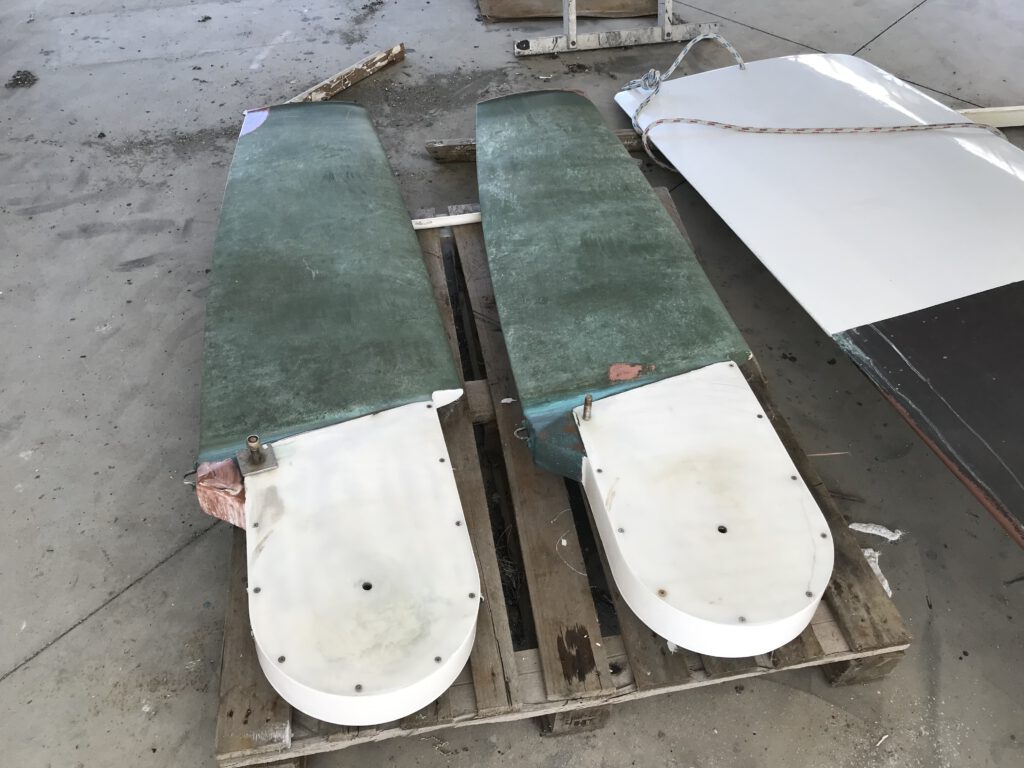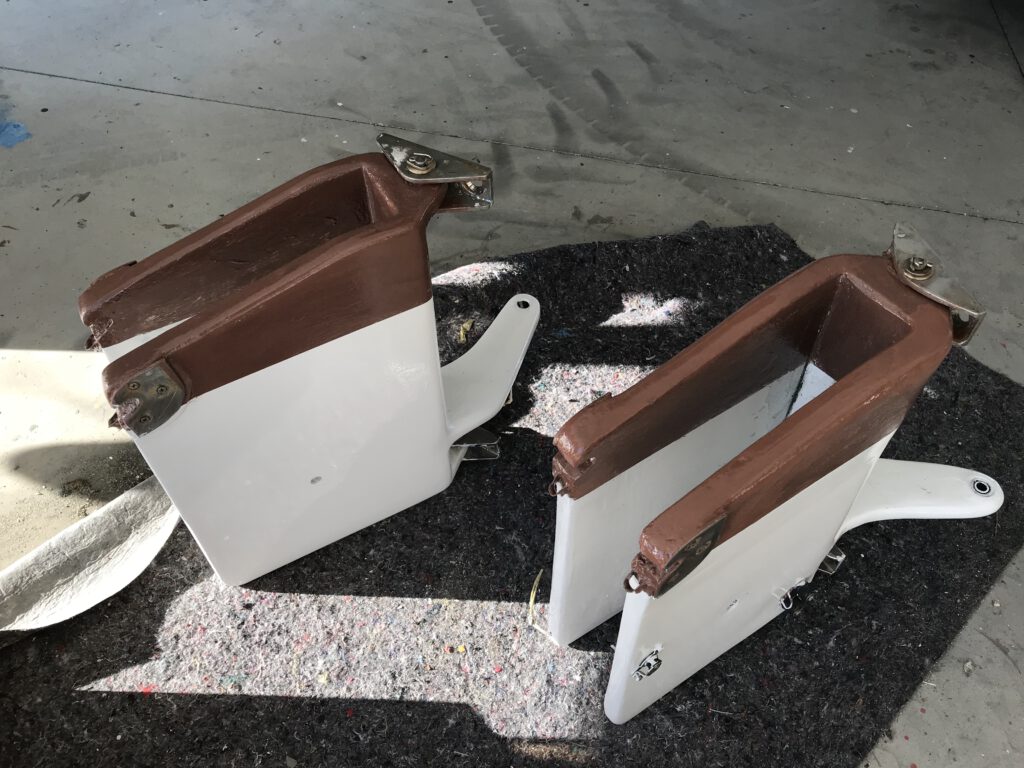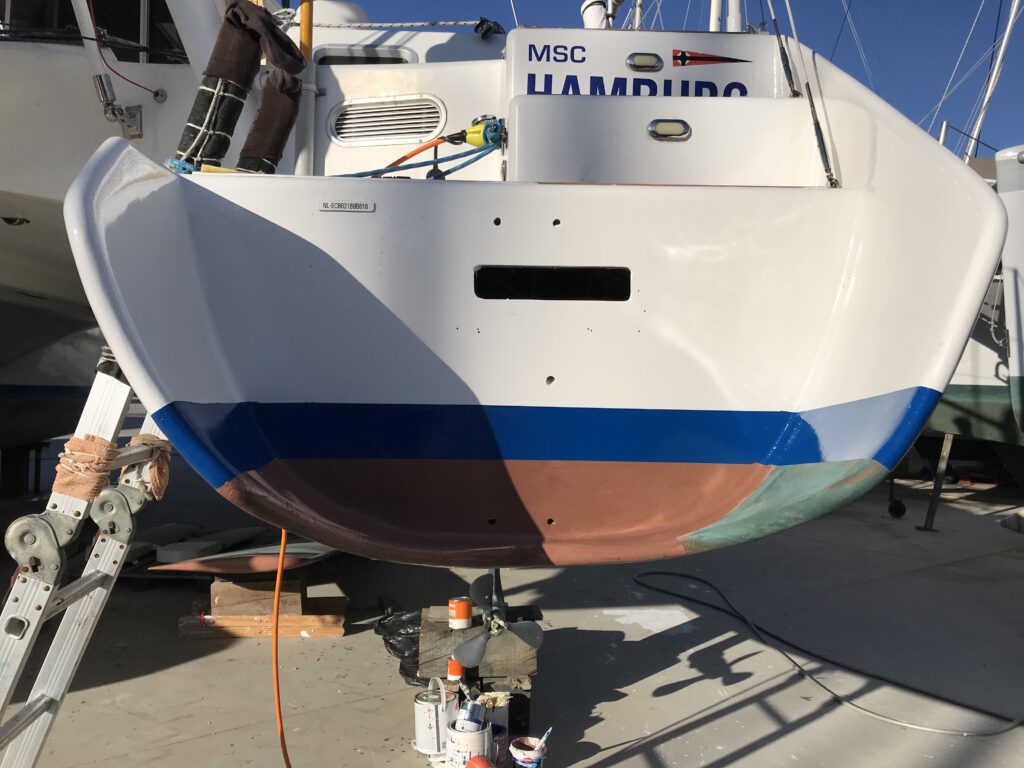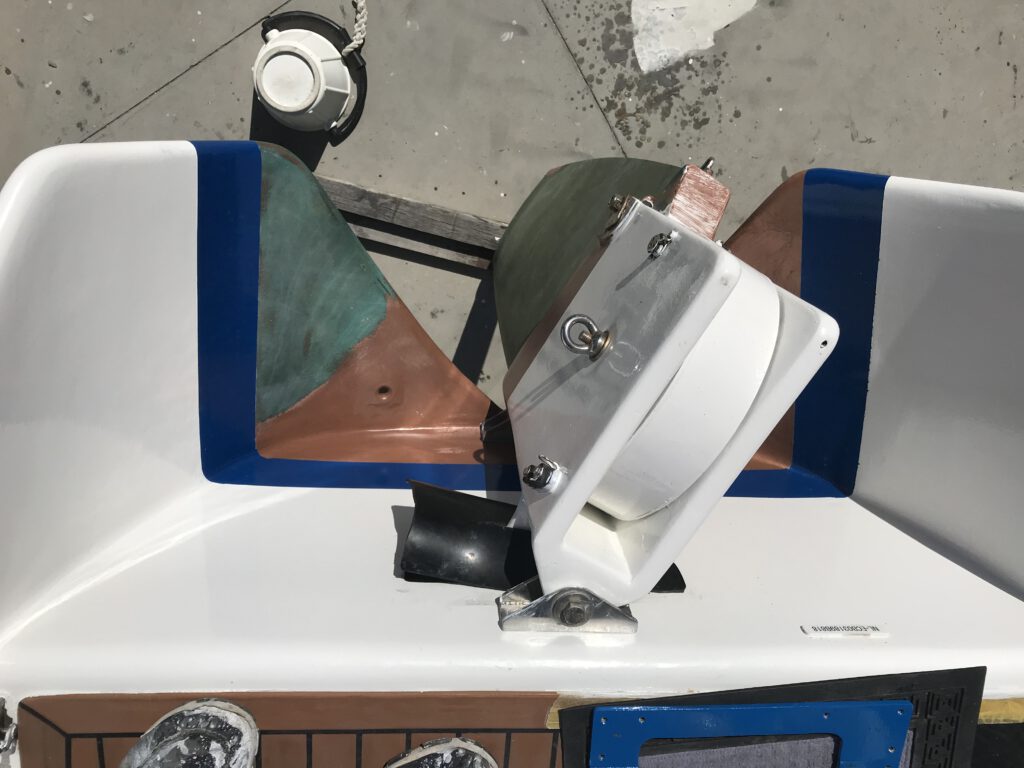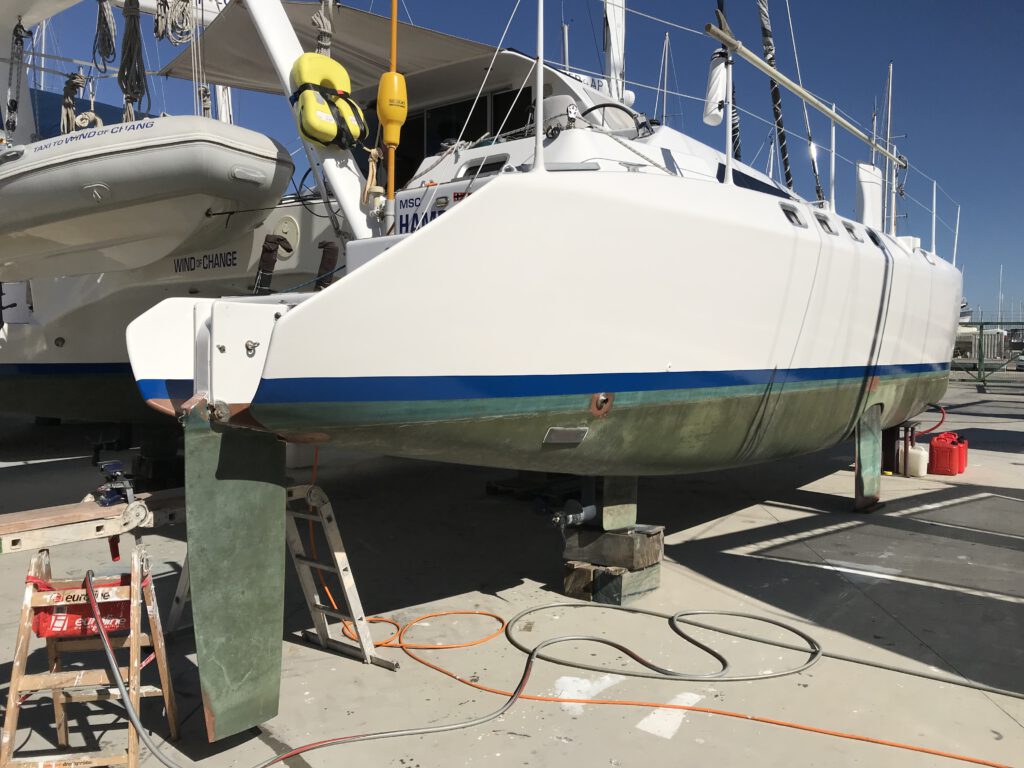Steering the ship
Steering of the F41 catamaran
An interplay of different systems steers the ship:
at two helm stations with autopilot and navigation instruments and through the action of the daggerboards, the two rudders, as well as hydraulics and electrics.
Rudder, daggerboards and autopilot
The autopilot does 98 % of the steering for us. Two rudders and the electric hydraulic pump act on the two hydraulic cylinders of the folding rudders at the stern of the hull. The remote control of the autopilot also makes steering from inside possible.
When manoeuvring in confined spaces and with little speed, the rudders no longer have sufficient effect. In this case, the catamaran is only driven with the engines. For turns, the outer engine is used for thrust and the inner engine for heading.
This often means thrust aft, in order to get around in narrow bays. With a cat you can easily turn 360° on the spot. When turning into a suitable box you have to bear in mind that a cat is diagonally longer than the LOA. I misjudged this when manoeuvring with the F31 trimaran in the beginning. With a bit of practice, you can make a transverse stop against the wind by alternately accelerating and against the wind. We don’t need a bow thruster for this.
